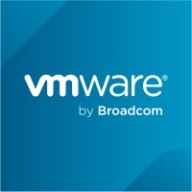

VMware Aria Automation and Spacelift compete in the automation software category. VMware Aria Automation seems to have the upper hand in enterprise-level features and integrations, while Spacelift stands out with its simplicity and modern interface.
Features: VMware Aria Automation offers extensibility and integration capabilities ideal for complex environments. It includes infrastructure automation, multi-machine blueprints, and integration with other VMware products. Spacelift integrates seamlessly with Terraform, provides a user-friendly interface, and supports infrastructure as code, making it appealing for uncomplicated cloud management. Additionally, it incorporates GitOps for DevOps workflow support. The primary distinction is VMware's comprehensive customization and integration versus Spacelift's emphasis on ease of use.
Room for Improvement: VMware Aria Automation could benefit from better documentation, easier platform integration, and enhanced user interfaces. The complexity in managing its components is another area for improvement. Spacelift lacks features for complex deployments, particularly in orchestration and dependency management. The SaaS version of Spacelift surpasses the self-hosted one, suggesting a need for feature parity.
Ease of Deployment and Customer Service: VMware Aria Automation is generally deployed on-premises or in private clouds. While the technical support is commendable, some complexity in deployment phases exists. In contrast, Spacelift focuses on public cloud deployment simplicity, offering community-driven support praised for its effectiveness. VMware has established customer support, whereas Spacelift relies more on community resources.
Pricing and ROI: VMware Aria Automation, while expensive, is viewed as valuable due to its feature-rich offerings, particularly for large enterprises. Its pricing is often bundled with other VMware products, a point of contention for some users. Spacelift offers a more cost-effective solution compared to competitors like Terraform Enterprise, making it appealing for enterprises aiming for reduced expenses. VMware’s pricing is higher but justified by its features, whereas Spacelift is noted for significant cost savings through effective use.
| Product | Market Share (%) |
|---|---|
| VMware Aria Automation | 9.4% |
| Spacelift | 1.0% |
| Other | 89.6% |


| Company Size | Count |
|---|---|
| Small Business | 32 |
| Midsize Enterprise | 24 |
| Large Enterprise | 130 |
Spacelift provides a sophisticated infrastructure management platform with key features such as Drift Detection and Terraform integration, simplifying complex deployments and enhancing user workflows through an intuitive interface.
Spacelift excels in modernizing infrastructure management by integrating smoothly with Terraform, using a pull request-based approach for visibility into logs. It automates change detection using GitOps from GitHub and supports AWS connectivity with credential management. Despite its strengths, some users find room for improvement in supporting smaller enterprises and offering more seamless cloud integrations with self-hosted versions. Handling of HashiCorp Vault secrets and cumbersome notification webhooks may require additional setup effort.
What are the most valuable features?In specific industries, Spacelift is primarily utilized for infrastructure management and deployment across platforms like AWS, Azure, and GCP. In banking architecture, it replaces Terraform Enterprise, ensuring secure and efficient operations. Projects like Google Fiber benefit from its capability to import and manage data effectively, engaging users with HashiCorp Language and GitHub for CI/CD integration.
VMware Aria Automation is a cloud management tool that allows companies to simplify their cloud experience through a modern automation platform. The solution is designed to deliver self-service clouds, multi-cloud automation with governance, and DevOps-based security and infrastructure management. It helps organizations improve IT agility, efficiency, and productivity through its various features.
VMware Aria Automation has multiple use cases that include the following:
VMware Aria Automation Features
VMware Aria Automation has various features that allow users to easily perform operations. Some of the solution's capacities include:
VMware Aria Automation Benefits
VMware Aria Automation offers its users various benefits. Some of the biggest advantages that the solution brings to companies that utilize it include:
Reviews from Real Users
Awais J., CTO/CEO at a tech services company, likes VMware Aria Automation because it saves a lot of time, provides more visibility, and has extensive automation capabilities.
An IT consultant at a government rates VMware Aria Automation highly because the product gives you flexibility to analyze and consume resources.
We monitor all Cloud Management reviews to prevent fraudulent reviews and keep review quality high. We do not post reviews by company employees or direct competitors. We validate each review for authenticity via cross-reference with LinkedIn, and personal follow-up with the reviewer when necessary.